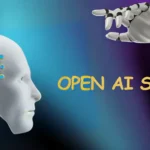Greetings from the deep learning world, where algorithms simulate the neural networks found in the human brain to solve intricate puzzles. We’ll examine the foundations of the Deep Learning Tutorial, as well as its theories, use cases, and innovative methods. This guide is designed to give you a firm grasp of Deep Learning Tutorial and procedures, regardless of your level of experience.
What is Deep Learning?
A subset of machine learning known as “deep learning” trains computers to carry out tasks by mimicking human learning from examples. If you were to teach a computer to recognize cats, you would show it thousands of images of cats rather than instructing it to search for whiskers, ears, and a tail. The computer learns to recognize a cat on its own by identifying common patterns.
Technically speaking, “neural networks,” which draw inspiration from the human brain, are used in deep learning. These networks are made up of information-processing layers of interconnected nodes. The network becomes “deeper” as it gains more layers, which enables it to learn more intricate features and carry out more difficult tasks.
How Deep Learning Works?
Deep learning first uses decision boundaries to identify which features accurately represent each label, and then it uses feature extraction to identify similar features of the same label. The deep learning models will separate animals into two classes based on features like the eyes, faces, and body shapes of cats and dogs. Deep neural networks make up the deep learning model. There are three layers in a simple neural network: input, hidden, and output. Multiple hidden layers are included in deep learning models, along with extra layers that increase the accuracy of the model.
The raw data is transferred to the nodes of the hidden layers by the input layers. The nodes in the hidden layers categorize the data points according to the more comprehensive target information, and with each layer that follows, the target value’s range gets smaller to yield precise hypotheses. The output layer chooses the most likely label based on information from the hidden layer. In this instance, correctly identifying the image of a dog instead of a cat.
Types of Deep Learning Tutorial Networks
Feed Forward Neural Network: An artificial neural network, or feed-forward neural network, is what prevents the nodes from forming a cycle. This kind of neural network has all of its perceptrons organized in layers, with the input layer generating output and the output layer receiving input. It is called hidden layers because there are no connections to the outside world. Every node in the next layer is connected to every single perceptron that is present in that layer. The conclusion is that every node is completely connected. There are no connections between the nodes in the same layer, either visible or invisible. With the feed-forward network, there are no back-loops.
Applications:
- Computer Vision
- Data Compression
- Pattern Recognition
- Speech Recognition
- Sonar Target Recognition
- Handwritten Characters Recognition
Recurrent Neural Network: An additional variant of feed-forward networks is recurrent neural networks. Here, every neuron in the hidden layers gets an input after a predetermined amount of time. Recurrent neural networks mostly access the previous data from previous iterations. For instance, one has to be aware of the words that have come before to predict the word that will come after in any sentence. It shares the length and weights crosswise time in addition to processing the inputs.
When the size of the input increases, it prevents the model’s size from growing. The sole issue with this recurrent neural network, though, is that it processes information slowly and doesn’t account for input that may come in the future that would affect the current state.
Applications:
- Robot Control
- Rhythm Learning
- Music Composition
- Speech Synthesis
- Machine Translation
- Time Series Prediction
- Speech Recognition
- Time Series Anomaly Detection
Convolutional Neural Network: Convolutional neural networks are a unique type of neural network that is primarily utilized for object recognition, image classification, and image clustering. Hierarchical image representations can be constructed unsupervised with the help of DNNs. Deep convolutional neural networks are the most preferred neural network type to attain optimal accuracy.
Applications:
- NLP.
- Drug Discovery.
- Checkers Game.
- Video Analysis.
- Image Recognition.
- Anomaly Detection.
- Time Series Forecasting.
- Identify Faces, Street Signs, Tumors.
Restricted Boltzmann Machine: Another type of Boltzmann machine is the RBM. In this case, the input layer and hidden layer neurons are connected symmetrically. Within the corresponding layer, there isn’t any internal association though. However, Boltzmann machines do take into account internal connections within the hidden layer, which sets them apart from RBM. The model trains more effectively thanks to these limitations in BMs.
Applications:
- Filtering.
- Classification.
- Risk Detection.
- Feature Learning.
- Business and Economic analysis.
Autoencoders: An additional type of unsupervised machine learning algorithm is an autoencoder neural network. In this case, there are just fewer hidden cells than input cells. Nonetheless, the quantity of input cells and the quantity of output cells are equal. To compel AEs to identify common patterns and generalize the data, an autoencoder network is trained to display the output similarly to the fed input. The smaller representation of the input is primarily handled by the autoencoders. It facilitates the process of reassembling the original data from compressed data. This algorithm only requires the output to be the same as the input, making it relatively simple.
Applications:
- Clustering.
- Classification.
- Feature Compression.
Why is Deep Learning Important?
- Handling large data: The advent of graphics processing units (GPUs) has made it possible for deep learning models to process massive amounts of data extremely quickly.
- High Accuracy: The most accurate outcomes in computer vision, audio processing, and natural language processing (NLP) come from deep learning models.
- Handling unstructured data: Standardizing data sets takes less time and money because models trained on structured data can readily learn from unstructured data.
- Pattern Recognition: While most models need the assistance of a machine learning engineer, deep learning models are capable of automatically identifying a wide range of patterns.
Conclusion
An introduction to neural networks, backpropagation, and sophisticated architectures such as convolutional and recurrent networks is given in this deep learning tutorial. It gives students the fundamental tools they need to take on challenging assignments in natural language processing, image recognition, and other fields. Explore this dynamic field more thoroughly to discover limitless opportunities.





